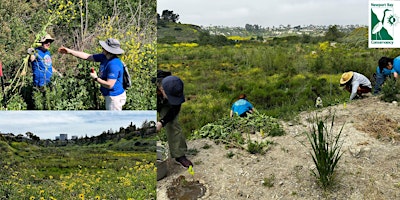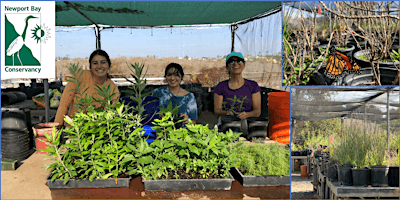 Winter is the rainy season in Southern California. When it rains, trash and debris from the city streets wash down the storm drains into the Upper Newport Bay. The bay collects water and refuse from a 154 square mile watershed encompassing seven cities. Waste from this area is carried down to the bay via San Diego Creek. Anything not captured upstream eventually flows down to the bay. It’s amazing what washes down: lots of polystyrene (Styrofoam), chunks of wood, tires, clothing, toys, tennis balls, and even dangerous items such as hypodermic needles. Thankfully, because of the change in the law, we are now seeing fewer plastic bags. Trash of many types poses health hazards for birds and marine life.
Winter is the rainy season in Southern California. When it rains, trash and debris from the city streets wash down the storm drains into the Upper Newport Bay. The bay collects water and refuse from a 154 square mile watershed encompassing seven cities. Waste from this area is carried down to the bay via San Diego Creek. Anything not captured upstream eventually flows down to the bay. It’s amazing what washes down: lots of polystyrene (Styrofoam), chunks of wood, tires, clothing, toys, tennis balls, and even dangerous items such as hypodermic needles. Thankfully, because of the change in the law, we are now seeing fewer plastic bags. Trash of many types poses health hazards for birds and marine life.
NBC organizes regular trash clean-up events on 2nd and 4th Sundays from September through February, but we stop in early spring, just as the rains come, because many species of birds—including some migrants, like the endangered Least tern—nest in the bay in the spring and summer. Despite the hazards to bird and marine life from so much debris, we can’t risk disturbing the bird nests by gathering trash during nesting season.
The trash situation will change dramatically, we hope, when the city of Newport Beach completes its planned trash-collection water wheel. Described by Hillary Davis in an article for the Daily Pilot, the trash wheel will look like “a snail with a paddle wheel, or a conch shell crossed with a steamboat.” To be located by the Jamboree Road bridge at the top of the bay and powered with solar energy, the wheel will funnel debris into a holding bin. Construction should begin in 2021, and when it’s in operation, this device should prevent up to 80% of floating debris from entering the bay. Start thinking of names for this amazing contraption now!
In the meantime, we hope you will join us for our Coastal Cleanup Day, Saturday, Sept. 26th.
Links:
- For a history of coastal cleanup efforts by the California Coastal Commission, see https://www.coastal.ca.gov/publiced/ccd/history.html
- For more on the trash wheel, see https://www.latimes.com/socal/daily-pilot/news/story/2020-01-09/name-that-trash-wheel-lots-of-public-engagement-possible-for-newports-planned-water-wheel









